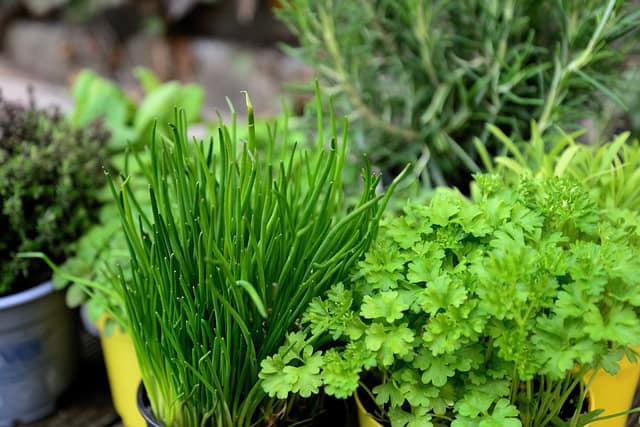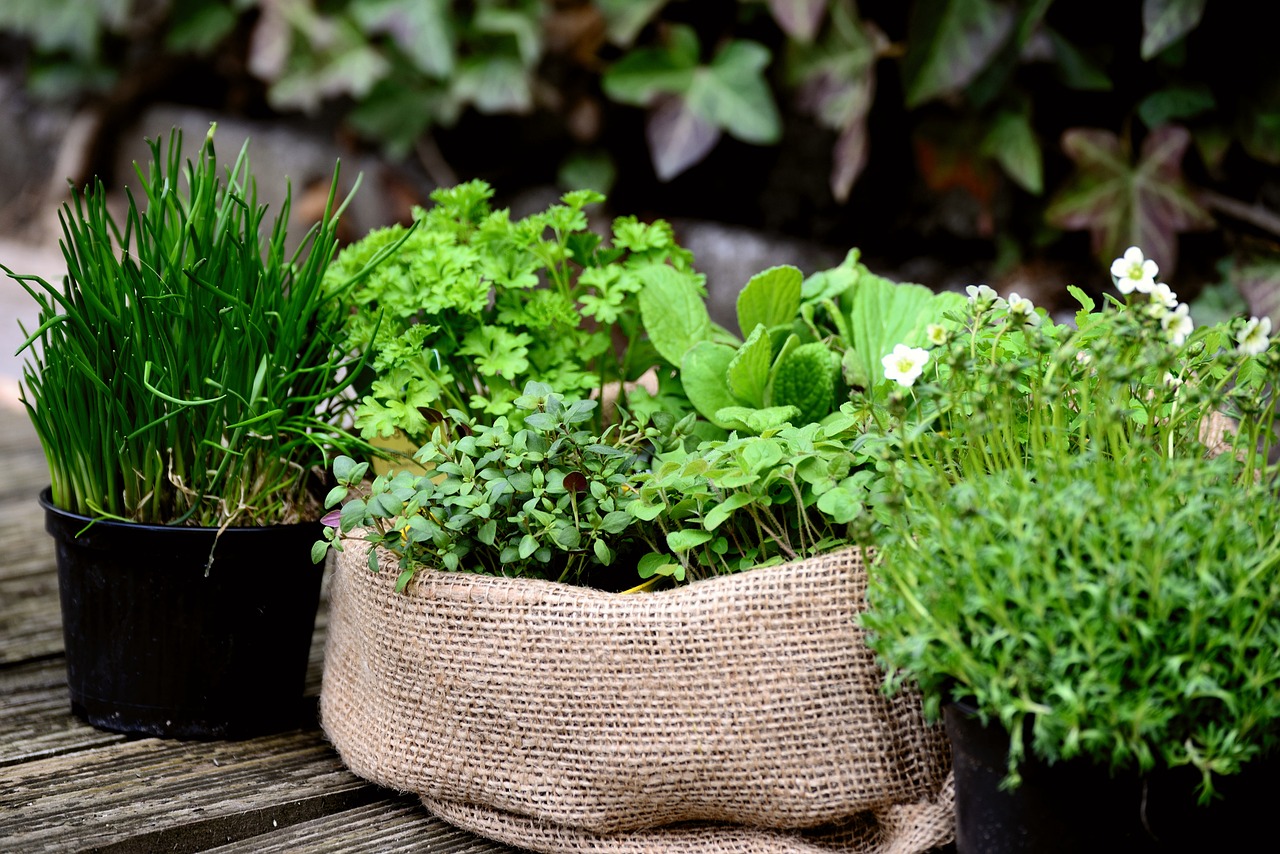This guide will walk you through the process of harvesting herbs, tips for maintaining plant health, and some creative ideas for using the herbs you grow.
Understanding Your Herbs

Different herbs have unique characteristics and requirements. Before you start harvesting, it’s important to understand the specific needs of each herb you are growing. Common culinary herbs include:
Basil: A warm-weather herb that thrives with regular harvesting. Pinching back the leaves promotes bushier growth.
Mint: Hardy and vigorous, mint can take over if not managed. Regularly trimming helps control its spread and encourages new growth.
Rosemary: This evergreen herb does not require frequent harvesting; instead, remove sprigs as needed to encourage new growth.
Thyme: A perennial herb that benefits from regular trimming. Harvesting can keep the plant from becoming woody.
When to Harvest
Harvesting herbs at the right time is crucial for achieving peak flavor and ensuring the plant continues to thrive. Here are some guidelines:
Timing: Most herbs are best harvested just before flowering, as this is when they contain the highest concentration of essential oils. For most herbs, this means late spring or early summer, depending on your climate.
Weather Conditions: Early mornings after the dew has evaporated are often the best times to harvest herbs. At this time, oils are more concentrated, and the leaves are less prone to wilting in the heat.
Growth Stage: For young plants, start harvesting leaves when they have enough growth to support continued harvesting. For mature plants, make sure to leave enough foliage so the plant can re-grow.
How to Harvest
The method you choose for harvesting your herbs can affect their growth and overall health. Here are some general techniques:
Pinching: For tender herbs like basil and cilantro, pinch off the leaves or stems using your fingers. This method is gentle and minimizes damage to the plant.
Cutting: Use sharp scissors or garden shears to cut stems. For woody herbs like rosemary and thyme, cutting stems about 1/3 of the way down helps maintain the plant’s structure.
Leave Enough: Ensure that you only take about one-third of the plant at a time. This practice allows the herb to continue thriving and producing more leaves.
Storing Your Harvest

After harvesting, you want to preserve the freshness and flavor of your herbs. Here are several storage methods:
Fresh Storage: For short-term use, place herbs in a glass of water on your countertop, similar to fresh flowers. Cover the tops with a plastic bag to keep humidity in, and change the water every few days.
Refrigeration: Wrap herbs in a slightly damp paper towel, place them in a plastic bag, and store them in the refrigerator. This can keep them fresh for up to two weeks.
Freezing: To store herbs long-term, chop them and place them in ice cube trays covered with olive oil or water. Once frozen, transfer them to labeled plastic bags for easy use when cooking.
Drying: Air-drying is a traditional method. Bundle herbs together and hang them upside down in a cool, dark place with good air circulation. This way, dried herbs can last for months.
Herb Salts and Oils: Mix dried herbs with salt to create herb-infused salts or combine chopped herbs with oils for flavored oils. These can add a kick to dishes and make perfect gifts.
Benefits of Harvesting Your Own Herbs
Growing and harvesting your own herbs comes with numerous advantages:
Freshness: Homegrown herbs are fresher than store-bought varieties, ensuring maximum flavor and aroma.
Convenience: Having fresh herbs at your fingertips makes it easy to enhance the flavor of your meals without a last-minute trip to the store.
Satisfaction: There’s a unique satisfaction in growing and harvesting your own herbs. Watching them thrive and then using them in your cooking brings a personal touch to your dishes.
Organic and Chemical-Free: Growing your herbs means you can control what does (or doesn’t) go on them, allowing you to grow completely organic herbs.
Common Mistakes to Avoid
Even seasoned gardeners can make mistakes when harvesting herbs. Here are a few tips to prevent issues:
Over-Harvesting: Taking too much at once can weaken the plant. Stick to harvesting a small amount each time to maintain plant health.
Improper Tools: Using dull tools can damage plants and result in a messy harvest. Always use sharp scissors or pruning shears to ensure clean cuts that promote healing and growth.
Ignoring Plant Health: If your herbs appear unhealthy (discoloration, wilting, or pests), avoid harvesting until they are healthy again. Harvesting compromised plants can lead to a decrease in flavor and an increased chance of illness.
Neglecting to Rotate Crops: If you grow herbs more than once in the same spot, consider rotating crops to prevent soil depletion and pest build-up.
Creative Ways to Use Your Harvested Herbs
Once you’ve successfully harvested your herbs, it’s time to incorporate them into your cooking and living spaces. Here are a few ideas:
Culinary Creations: Use fresh herbs in salads, dressings, marinades, and sauces. Chopped herbs can enhance the flavor of everything from pasta dishes to meats and vegetables.
Herbal Teas: Many herbs can be used to brew delicious teas. Mint, chamomile, and lemon balm make refreshing beverages that can also serve as soothing aids.
Infused Oils and Vinegars: Create your own flavored oils and vinegars by infusing fresh herbs into olive oil or vinegar. Allow the infusion to sit for at least a week before using, and enjoy these flavors in salad dressings or marinades.
Herbal Bath: Many herbs like lavender and rosemary can be added to bathwater for a soothing and aromatic experience. Simply tie a handful of fresh herbs in a muslin bag and steep in warm water.
Gifts and Crafts: Create herb sachets for closets or drawers by drying herbs like lavender and rosemary, using them to add a pleasant aroma to any space. These sachets also make thoughtful gifts.
Cooking with Children: Involve children in the cooking process by letting them help harvest and incorporate herbs into family meals. This can teach them about gardening and cooking while helping them appreciate the flavors that fresh herbs add.
Conclusion
Harvesting herbs is a rewarding practice that can greatly enhance your culinary experiences and your living space. By understanding the specific needs of your plants, mastering the techniques of harvesting, and knowing how to store and use your herbs, you can enjoy their benefits throughout the year. Not only will you relish in the freshness of home-grown herbs, but you’ll also gain the satisfaction that comes from nurturing and caring for your own plants. So, roll up your sleeves, step into your garden, and start harvesting your way to richer, more flavorful meals and aromatic spaces.





